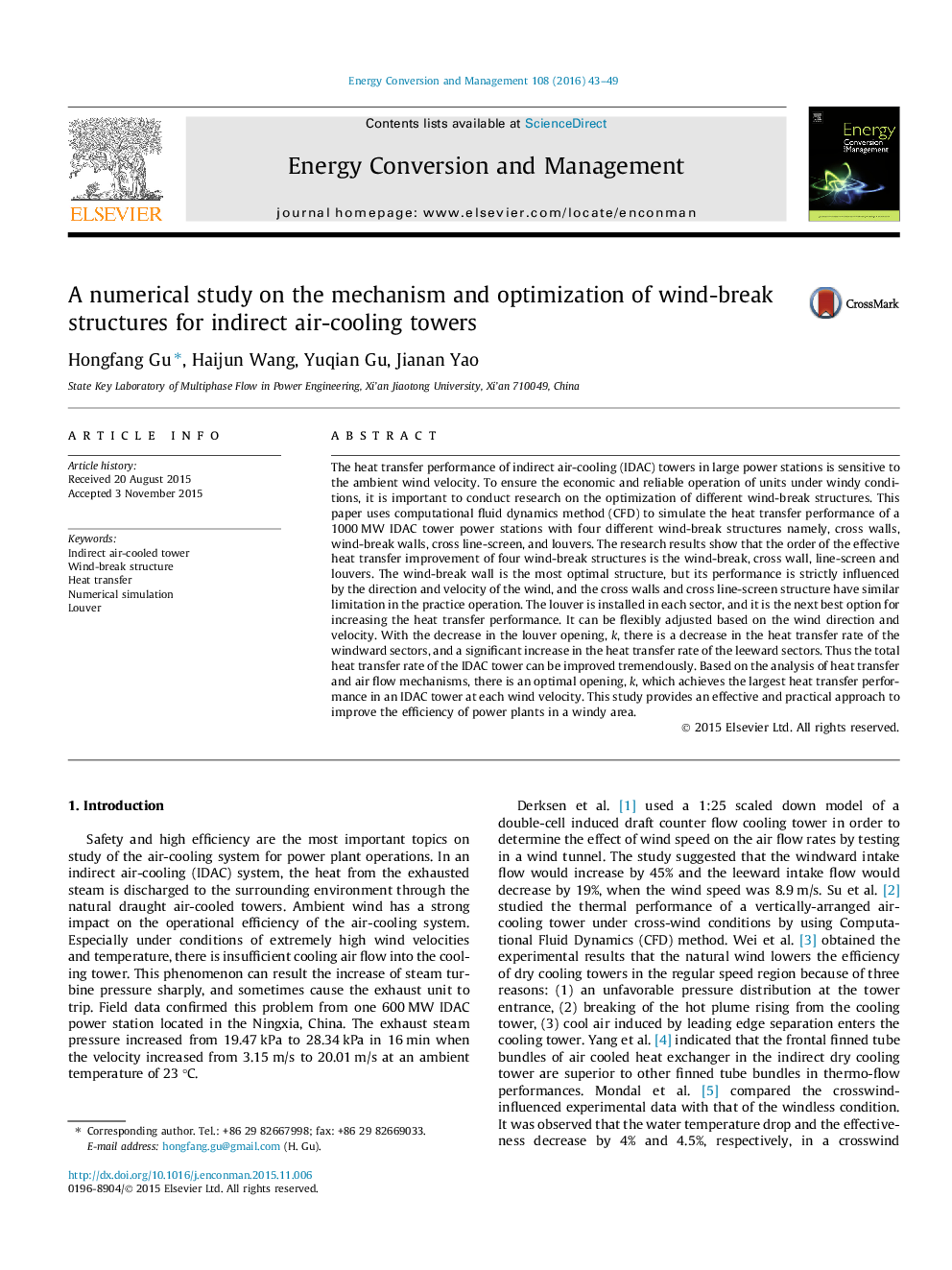| Article ID | Journal | Published Year | Pages | File Type |
|---|---|---|---|---|
| 7161240 | Energy Conversion and Management | 2016 | 7 Pages |
Abstract
The heat transfer performance of indirect air-cooling (IDAC) towers in large power stations is sensitive to the ambient wind velocity. To ensure the economic and reliable operation of units under windy conditions, it is important to conduct research on the optimization of different wind-break structures. This paper uses computational fluid dynamics method (CFD) to simulate the heat transfer performance of a 1000Â MW IDAC tower power stations with four different wind-break structures namely, cross walls, wind-break walls, cross line-screen, and louvers. The research results show that the order of the effective heat transfer improvement of four wind-break structures is the wind-break, cross wall, line-screen and louvers. The wind-break wall is the most optimal structure, but its performance is strictly influenced by the direction and velocity of the wind, and the cross walls and cross line-screen structure have similar limitation in the practice operation. The louver is installed in each sector, and it is the next best option for increasing the heat transfer performance. It can be flexibly adjusted based on the wind direction and velocity. With the decrease in the louver opening, k, there is a decrease in the heat transfer rate of the windward sectors, and a significant increase in the heat transfer rate of the leeward sectors. Thus the total heat transfer rate of the IDAC tower can be improved tremendously. Based on the analysis of heat transfer and air flow mechanisms, there is an optimal opening, k, which achieves the largest heat transfer performance in an IDAC tower at each wind velocity. This study provides an effective and practical approach to improve the efficiency of power plants in a windy area.
Related Topics
Physical Sciences and Engineering
Energy
Energy (General)
Authors
Hongfang Gu, Haijun Wang, Yuqian Gu, Jianan Yao,
